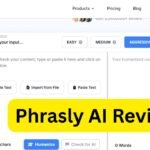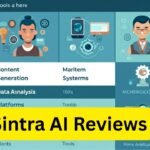AI Patent Drafting Tools Comparison
The world of intellectual property is undergoing a significant transformation. For decades, the process of drafting a patent application has been a meticulous, time-consuming, and expensive endeavor, reserved for highly specialized attorneys. It requires deep technical understanding, precise legal language, and countless hours of careful work. But what if technology could streamline this complex process? This is where artificial intelligence enters the picture. The rise of AI is revolutionizing how inventors and legal professionals approach patent creation.
This guide provides a comprehensive AI patent drafting tools comparison, designed for inventors, entrepreneurs, and legal teams alike. We will explore how these innovative platforms work, what benefits they offer, and how they stack up against one another. By the end, you will have a clear understanding of which tool might be the right fit for your specific needs, helping you protect your ideas more efficiently and effectively.
The Dawn of AI in Patent Law
Before we dive into comparing specific tools, it’s important to understand why AI is making such a big impact on patent drafting. The traditional process is notoriously challenging. A patent attorney must first understand the invention inside and out. Then, they must conduct a thorough prior art search to ensure the invention is novel. Finally, they must write a detailed specification and a set of claims that are broad enough to protect the invention but narrow enough to be patentable.
This entire process can take weeks or even months and cost tens of thousands of dollars. The complexity and cost create a high barrier to entry, especially for solo inventors, startups, and small businesses.
AI tools are designed to tackle these challenges head-on. They use advanced algorithms, including natural language processing (NLP) and machine learning (ML), to automate many of the repetitive and data-intensive tasks involved in drafting. For example, AI can analyze an inventor’s description, identify key novel features, search for similar existing patents (prior art), and even generate initial drafts of the claims and specification. This doesn’t replace the patent attorney but empowers them, making the process faster, more accurate, and more affordable.
Key Benefits of Using AI Patent Drafting Tools
Integrating AI into your patent workflow offers a multitude of advantages. These platforms are more than just fancy word processors; they are intelligent assistants that can significantly enhance the quality and efficiency of your patent applications.
1. Increased Efficiency and Speed
This is perhaps the most significant benefit. AI can accomplish in minutes what might take a human hours or days. Generating a first draft of a patent application, including specifications and claims, can be done with incredible speed. This allows legal teams to handle a higher volume of applications and helps inventors get their ideas protected faster, which is crucial in a competitive market.
2. Reduced Costs
By automating time-consuming tasks, AI tools can substantially lower the legal fees associated with patent drafting. While they don’t eliminate the need for a patent attorney, they reduce the number of billable hours required. The attorney can then focus on higher-value tasks like strategic advice, claim refinement, and prosecution strategy, rather than on manual drafting and searching. This makes patent protection more accessible for those with limited budgets.
3. Enhanced Quality and Consistency
Humans are prone to errors and inconsistencies, especially when working on long, complex documents. AI tools can maintain a consistent style and terminology throughout the application. They can also check for common drafting errors, such as antecedent basis issues, ensuring that every element mentioned in the claims is properly defined in the specification. This leads to a higher-quality initial draft that requires less revision.
4. Comprehensive Prior Art Searching
A strong patent application is built on a thorough understanding of the existing prior art. AI tools are incredibly powerful at this. They can scan millions of patents and technical documents from global databases in seconds. Using semantic search capabilities, they can find conceptually similar inventions even if they use different terminology. This helps inventors and attorneys assess the patentability of an idea more accurately from the outset.
5. Data-Driven Insights
Some advanced AI platforms provide analytics and insights based on data from patent offices. For example, they might predict the likelihood of a claim being approved or identify which patent examiners are more likely to issue rejections for certain types of technology. These insights can help shape a more effective filing strategy.
AI Patent Drafting Tools: A Comparative Overview
| Tool Name | Key Features | Strengths | Weaknesses | Best For | Pricing Model |
|---|---|---|---|---|---|
| PatentPal | Automated specification drafting from claims, flowchart and block diagram generation, antecedent basis checking, MS Word add-in. | High-speed drafting, generates human-like text, integrates into existing attorney workflows seamlessly. | Workflow requires claims to be drafted first; less focused on ideation or prior art search. | Patent law firms and in-house legal teams aiming to increase drafting throughput and efficiency. | Subscription-based, typically geared towards professional/enterprise users. |
| Specifio | Converts method claims into a full patent application, cloud-based platform, intelligent synonym generation for broad support. | Extreme simplicity and ease of use, very fast turnaround time for drafts, consistent and reliable output quality. | Highly specialized (claims-to-spec only), fewer customization options, lacks integrated prior art or analysis tools. | Patent practitioners who have finalized claims and need to produce a specification draft quickly and cost-effectively. | Per-application pricing or subscription plans, offering flexibility for varied workloads. |
| Rowan Patents | End-to-end platform: invention disclosure, drafting, real-time analysis, integrated prior art search, shell application generation. | Fully integrated workflow, proactive error checking reduces revision time, comprehensive feature set. | Steeper learning curve due to its extensive features, can have a higher subscription cost. | Large law firms and corporate legal departments needing a single, integrated platform to manage the entire drafting process. | Enterprise-level subscription, often customized based on the size of the organization. |
| Qatent | Guided Q&A for invention disclosure, AI-powered provisional patent application (PPA) drafting, semantic prior art search, built-in educational resources. | Accessible for non-lawyers, cost-effective for securing a filing date, focuses on creating strong PPAs. | Not a substitute for a patent attorney for non-provisional applications or legal strategy, may be less suitable for highly complex inventions. | Startups, solo inventors, and small businesses seeking an affordable way to draft a quality provisional patent application. | One-time fee per application or lower-cost subscription models designed for individual inventors. |
An In-Depth AI Patent Drafting Tools Comparison
The market for AI patent drafting software is growing rapidly, with several key players offering unique features and capabilities. Let’s take a closer look at some of the most prominent tools and see how they compare.
PatentPal: The Automated Drafting Powerhouse
PatentPal is often cited as one of the pioneers in using generative AI for patent applications. It is designed to automate the mechanical aspects of drafting, allowing patent practitioners to focus on strategy and high-level analysis.
Key Features:
- Automated Specification Drafting: PatentPal excels at generating a complete first draft of a patent specification. Users provide a set of claims, and the tool builds out the background, summary, figures, and detailed description around them.
- Figure Generation: The tool can automatically generate flowcharts and block diagrams based on the method claims you provide. This saves a significant amount of time typically spent with a draftsperson.
- Antecedent Basis Checking: It includes a robust tool that automatically identifies and flags antecedent basis errors, a common source of office action rejections.
- Integration with Word: PatentPal functions as a Microsoft Word add-in, allowing practitioners to work within a familiar environment.
Strengths:
- Speed: It can generate a comprehensive draft in under an hour, a task that would normally take a full day or more.
- Quality of Generated Text: The generated language is clear, well-structured, and closely mimics the style of a human-written patent.
- Focus on Practitioners: PatentPal is built for patent attorneys and agents, streamlining their existing workflow rather than trying to replace them.
Weaknesses:
- Requires Claims First: The primary workflow requires the user to input a set of claims first, which means the practitioner still needs to do the initial conceptual work of claim drafting.
- Less Focus on Ideation: It is more of a production tool than an invention-capture or prior-art analysis tool.
Best For:
Patent law firms and in-house legal teams looking to dramatically increase their drafting efficiency and throughput.
Specifio: The Claims-to-Specification Specialist
Specifio operates on a similar principle to PatentPal. Its core function is to take a set of patent claims and automatically generate a complete patent application specification. The company’s tagline, “from claims to patent application in minutes,” perfectly describes its value proposition.
Key Features:
- Automated Drafting: Users paste their method claims into the web-based interface, and Specifio’s AI writes the rest of the application. The system can handle multiple independent claims.
- Synonym Generation: The tool intelligently recognizes key terms in the claims and uses synonyms and variations throughout the specification to provide broad support.
- Cloud-Based Service: The entire process is handled through a secure online portal, making it accessible from anywhere.
Strengths:
- Simplicity and Ease of Use: The interface is incredibly straightforward. There’s almost no learning curve—you simply paste your claims and click “generate.”
- Fast Turnaround: Like PatentPal, it delivers a complete draft in minutes.
- Consistent Quality: The output is reliable and follows standard patent formatting, providing a solid foundation for an attorney to refine.
Weaknesses:
- Limited Scope: Specifio is highly specialized. It does one thing—generating a specification from claims—and does it well. It lacks features for prior art searching or invention disclosure management.
- Less Customization: The generation process is largely a “black box” with fewer user controls compared to some other platforms.
Best For:
Practitioners who have already finalized their claims and need to quickly and cost-effectively produce a first draft of the supporting specification.
Rowan Patents: The End-to-End Drafting Suite
Rowan Patents offers a more comprehensive suite of tools that covers a larger portion of the patent prosecution lifecycle. It aims to be an all-in-one solution for drafting, analyzing, and managing patent applications.
Key Features:
- Invention Disclosure Management: The platform provides tools for inventors to submit their ideas in a structured way, making it easier for attorneys to get started.
- Drafting and Analysis: Rowan combines automated drafting with powerful analysis tools. It can identify potential issues like term ambiguity, lack of support, and claim scope problems as you write.
- Prior Art Searching: It integrates prior art search capabilities directly into the drafting environment, allowing you to check for novelty in real time.
- Shell Generation: The tool can generate a shell application with boilerplate text, freeing up the user to focus on the technical substance.
Strengths:
- Integrated Workflow: By combining invention capture, drafting, and analysis, Rowan creates a seamless end-to-end workflow that reduces the need to switch between different software tools.
- Proactive Error Checking: Its real-time analysis helps drafters avoid common mistakes before they become ingrained in the application, saving time during revision.
- Comprehensive Solution: It addresses more of the patent lifecycle than just the initial draft generation.
Weaknesses:
- Steeper Learning Curve: With more features comes more complexity. It can take time for users to become proficient with the entire suite of tools.
- Cost: As a more comprehensive platform, its subscription cost can be higher, making it a bigger investment for smaller firms or solo practitioners.
Best For:
Larger law firms and corporate legal departments that want a fully integrated platform to manage the entire patent drafting process, from disclosure to filing.
Qatent: The Inventor-Friendly Assistant
Qatent takes a slightly different approach, targeting inventors and entrepreneurs who may be new to the patent process. It aims to demystify patenting by guiding users through the steps of creating a high-quality provisional patent application.
Key Features:
- Guided Invention Disclosure: The platform uses a question-and-answer format to help inventors fully describe their invention, ensuring all critical aspects are covered.
- AI-Powered Drafting: Based on the inventor’s input, Qatent’s AI generates a provisional patent application that is written in a clear and technically accurate way.
- Prior Art Discovery: It includes a semantic prior art search tool that helps inventors understand the existing landscape and position their invention’s novelty.
- Educational Resources: The platform is filled with tips and explanations to help non-lawyers understand the patenting process.
Strengths:
- Accessibility for Non-Lawyers: Qatent is designed from the ground up to be used by inventors themselves, making it an excellent tool for startups and solo creators.
- Focus on Provisional Applications: It specializes in creating strong provisional patent applications (PPAs), which is a cost-effective first step for securing a filing date.
- Cost-Effective: It offers a much lower price point than hiring a patent attorney for the initial draft, lowering the barrier to entry for innovation.
Weaknesses:
- Not a Replacement for Legal Advice: While powerful, it is not a substitute for a qualified patent attorney, especially when it comes to claim strategy and filing non-provisional applications.
- Less Suited for Complex Inventions: For highly complex or nuanced inventions, the guided process may not be sufficient to capture all the necessary detail.
Best For:
Startups, solo inventors, and small businesses that need a cost-effective way to draft a high-quality provisional patent application and secure an early filing date.

How to Choose the Right AI Tool for You
With several strong options available, selecting the best one depends entirely on your specific situation. This AI patent drafting tools comparison reveals that there is no single “best” tool for everyone. Here are some key factors to consider when making your decision:
1. Who is the User?
- Patent Attorneys/Agents: If you are a legal professional, tools like PatentPal, Specifio, and Rowan Patents are designed for your workflow. PatentPal and Specifio are excellent for pure drafting speed, while Rowan offers a more integrated, soup-to-nuts solution.
- Inventors/Entrepreneurs: If you are an inventor looking to take the first step yourself, Qatent is built for you. Its guided process and educational focus make it the most accessible option for drafting a provisional application.
2. What is Your Goal?
- Drafting Efficiency: To simply speed up the creation of specifications from existing claims, Specifio and PatentPal are the market leaders.
- End-to-End Workflow Improvement: To manage the entire process from invention disclosure to filing-ready draft, with built-in analytics, Rowan Patents is the most comprehensive choice.
- Affordable Provisional Filing: To secure a priority date with a strong provisional application without a large upfront legal investment, Qatent is the ideal solution.
3. What is Your Budget?
- Enterprise/Large Firm: For organizations that can invest in a platform to achieve firm-wide efficiency gains, the comprehensive features of Rowan Patents may justify the higher cost.
- Small Firm/Boutique: Mid-tier tools like PatentPal and Specifio offer a tremendous return on investment by increasing billable efficiency.
- Startup/Solo Inventor: For those on a tight budget, the affordability of Qatent for provisional applications is a game-changer.
The Future of AI in Patent Law
The tools discussed here represent just the beginning. The field of AI-powered legal technology is advancing at an astonishing pace. In the future, we can expect to see AI play an even larger role in the patent lifecycle. This may include:
- Predictive Analytics: AI could predict the likelihood of a patent being granted, forecast prosecution timelines, and even suggest arguments to use against an examiner’s rejections.
- Fully Automated Claim Generation: While current tools assist with claims, future AI may be able to generate novel and defensible claims directly from a technical description.
- Global Prosecution Management: AI could help manage a global patent portfolio by tracking deadlines, translating documents, and adapting applications to the specific requirements of different countries’ patent offices.
It is crucial to remember that these tools are built to assist, not replace, human expertise. The strategic thinking, creative problem-solving, and nuanced legal judgment of a patent attorney remain indispensable. The most successful legal professionals will be those who embrace these technologies and leverage them to provide more value to their clients.
Conclusion: Embracing the New Era of Innovation
The emergence of AI patent drafting tools marks a pivotal moment in the history of intellectual property. They are democratizing access to patent protection, enabling inventors and businesses to safeguard their ideas more quickly and affordably than ever before. For legal professionals, these tools are powerful allies that automate tedious work, freeing them to concentrate on the strategic elements where their expertise truly shines.
This AI patent drafting tools comparison shows a diverse market with solutions tailored to different users and needs. Whether you are a solo inventor drafting your first provisional application with Qatent, or a large law firm accelerating your workflow with PatentPal or Rowan Patents, there is a tool that can help you navigate the complex world of patents with greater confidence and efficiency. The key is to understand your own needs and choose the platform that best aligns with your goals. By doing so, you can harness the power of AI to turn your brilliant ideas into valuable, protected assets.










